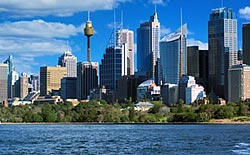Korean Police Clearance Translation in Sydney
The Australian immigration authorities generally require a translation of a police clearance certificate (also called conviction record, penal clearance certificate, certificate of good conduct or police check) as part of their character check, to know if convictions were recorded against your name. Typically, police clearance certificates are obtained from the federal police or a similar authority in your home country.
We provide police clearance certificate translations on a daily basis and in many languages. It is a very common document used in almost any country.
To get your police clearance certificate translation, contact us now. Our NAATI translators are ready to provide fast and accurate translation service for your documents.
Sydney Translation Service
- Your police clearance certificate translation can be done within two days or faster
- Express options available
- No office visit required
- Best price guarantee
- DIAC acceptance guaranteed
- NAATI translator stamped
- Mailed to your address
- Just attach your document(s) here to get a free quote
More About The Korean Language
There are seven verb paradigms or speech levels in Korean, and each level has its own unique set of verb endings which are used to indicate the level of formality of a situation. Unlike honorifics—which are used to show respect towards the referent (whom you are talking about) —speech levels are used to show respect towards a speaker's or writer's audience (whom you are talking to). The names of the seven levels are derived from the non-honorific imperative form of the verb 하다 (hada, "do") in each level, plus the suffix 체 ("che", hanja: 體), which means "style".
The highest six levels are generally grouped together as jondaenmal (존댓말), while the lowest level (haeche, 해체) is called banmal (반말) in Korean.
In traditional society, Korean women often place themselves in a position of powerlessness, and this in turn is observed in their everyday speech patterns. Some examples of this can be seen in: (1) a woman’s use of softer tone in order to minimize conflict or aggression; (2) a married woman introducing herself as someone’s mother or wife, not with her own name; (3) the presence of gender differences in titles and occupational terms (for example, a sajang is a company president and yŏsajang is a female company president.); (4) and females sometimes using more tag questions and rising tones in statements, much like the way that young children talk.
In western societies, individuals will avoid expressions of power asymmetry, mutually addressing each other by their first names for the sake of solidarity. Between two people of asymmetrical status in a Korean society, people tend to emphasize differences in status for the sake of solidarity. Koreans prefer to use kinship terms rather than any other terms of reference. In traditional Korean society, women have long been in disadvantaged positions. Korean social structure traditionally consisted of a royal monarch, a patriarchically dominated family system that emphasizes the maintenance of family lines. This structure has tended to separate roles of women from those of men.
Korean Translator in Sydney

Sydney is the most populous city in Australia and the state capital of New South Wales. It is located on Australia's south-east coast of the Tasman Sea. As of June 2010, the greater metropolitan area had an approximate population of 4.6 million people. Inhabitants of Sydney are called Sydneysiders, comprising a cosmopolitan and international population.
The site of the first British colony in Australia, Sydney was established in 1788 at Sydney Cove by Arthur Phillip, commodore of the First Fleet as a penal colony. The city is built on hills surrounding Port Jackson which is commonly known as Sydney Harbour, where the iconic Sydney Opera House and the Harbour Bridge feature prominently. The hinterland of the metropolitan area is surrounded by national parks, and the coastal regions feature many bays, rivers, inlets and beaches including the famous Bondi Beach and Manly Beach. Within the city are many notable parks, including Hyde Park and the Royal Botanic Gardens.1
With so many beaches and bays close to Sydney’s city centre, it’s no wonder that Sydneysiders choose to enjoy a summer holiday at home. You’ll find them starting the day with a run along a beach, taking a leisurely walk, going surfing or enjoying a coffee at a beachside cafe.
Enjoy some of the world’s most famous beaches, such as Bondi and Manly, with their unique combination of surfing, shopping and beachside dining. Or find your own patch of sandy paradise, from Tamarama to Coogee, Dee Why to Palm Beach.

